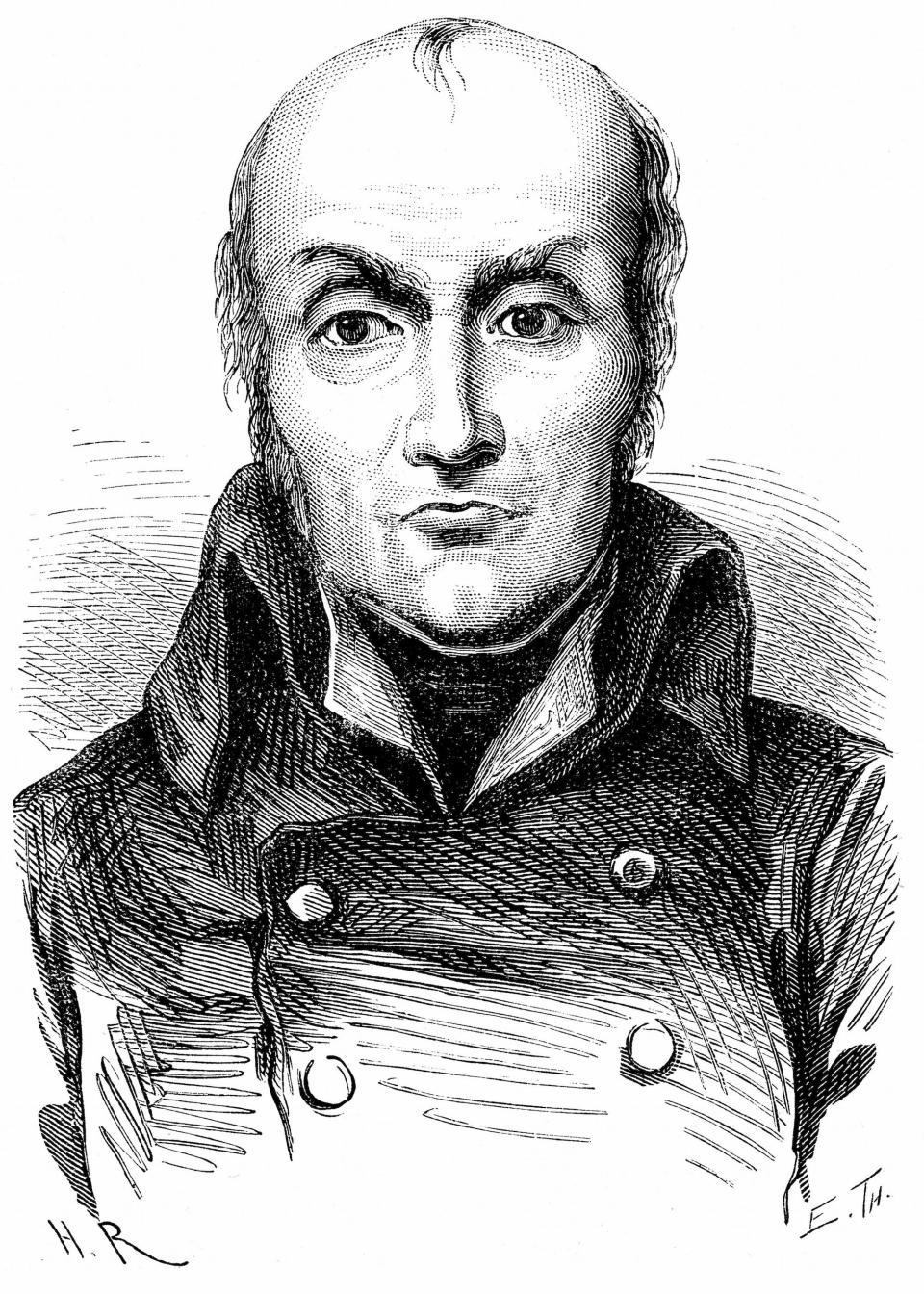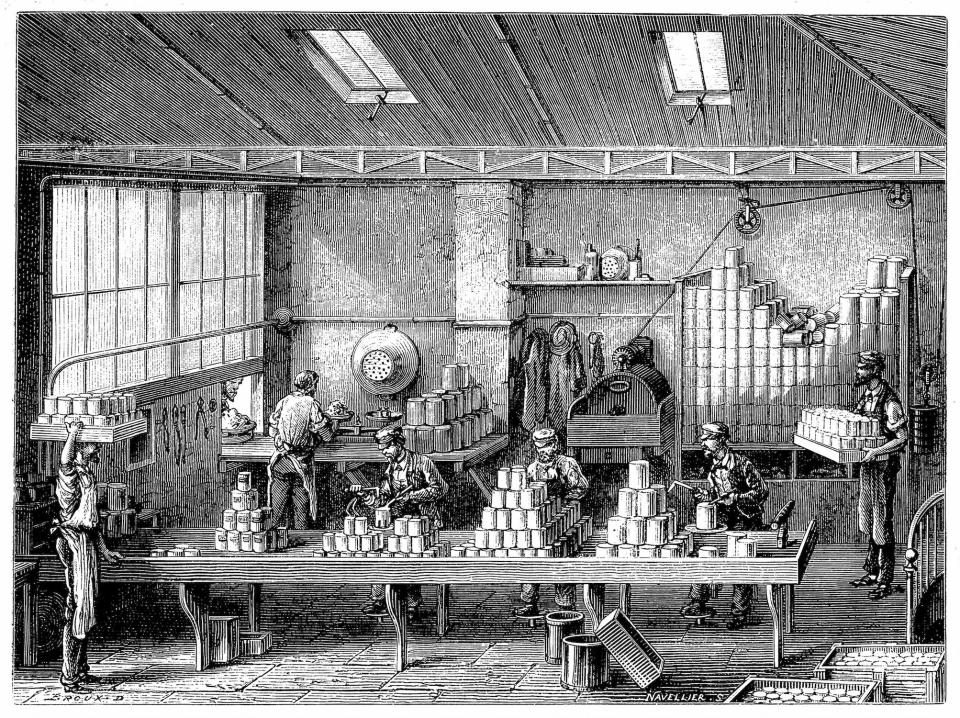-
Expanding empires and maritime exploration in the 1800s required reliably preserved food.
-
A confectioner was rewarded with 12,000 francs for his method of heating food and placing it in glass jars.
-
The bottles were heavy and fragile and were soon replaced by canned food.
In 1815, explorer and botanist Sir Joseph Banks wrote a complimentary letter to a canned food manufacturer about the two-year-old corned beef he had just eaten.
He called canning “one of the most important discoveries of our age.” He also requested concentrated consumption because it was better than the soup he usually ate “at home or abroad”.
At the time, commercial canned foods were almost brand new; It was almost the same age as Bank’s veal.
Finding a reliable way to preserve food was crucial to colonizing and waging war on nations. This included Napoleon Bonaparte’s France.
Search for food preservation methods
Napoleon witnessed the effects of hunger and thirst while leading his army through the Egyptian heat in 1798.
When he came to power in France, Napoleon elevated doctors and scientists to positions of power that could solve such problems.
These men later formed organizations and “promoted research into food preparation and preservation that could benefit the armies and navies of France,” historian Jennifer J. Davis wrote in “Defining Culinary Authority.”
In 1809, one such organization, the Société d’encouragement pour l’industrie Nationale, organized a competition investigating methods of food preservation.
Nicolas Appert, who has been preserving food in corked jars for several years and has been experimenting with heating and bottling food for over a decade, received the award.
Appert method in food preservation
Apper has been in the food industry almost since childhood. His father was an innkeeper and brewery owner and worked in distilleries and wine cellars before opening his own candy store.
The heating process required to make candy, as well as the bottling process for wine and beer, may have influenced the method of preserving food. He described himself as someone “trained in the art of preparation and preservation” and who had “lived in cellars, breweries, warehouses and champagne cellars”.
He started preserving different foods in 1795. He first used empty champagne bottles and then specially made glass containers. After sealing them, he would boil the entire bottle and its contents in a water bath.


Apper wasn’t exactly sure why his method worked, but he believed that limiting exposure to air and the temperature of the water were “both indispensable.” He was right on both counts.
In addition to bottling vegetables and fruits such as asparagus, cauliflower, peaches and cherries, Appert also partially cooked some dishes before bottling and heating them. He made seasoned eel, sheep tongue, broth and eggs in bechamel sauce.
He experimented with different times and temperatures to heat different dishes to make sure his food retained the correct color, aroma, and taste. Many of them, like the beef jelly that only needs to be heated for 15 minutes, would probably not pass food safety inspections.
Each jar of canning can cost a day’s wage. Those who could afford it could open the can (which was actually quite a chore until the can opener was invented decades later) and enjoy nearly fresh green vegetables in the dead of winter.
Why didn’t Appert’s method gain traction?
In 1810, the French Ministry of the Interior paid Appert 12,000 francs to print a description of the conservation process for the purpose of “disseminating knowledge”. His book “The Art of Preserving Animal and Vegetable Matter for Several Years” sold thousands of copies.
“Appert found a way to correct the seasons,” according to one article. Distinguished cookbook authors have praised her process.
Folklorist Danille Elise Christensen noted that “sugar-free water bath procedures” appeared in cookbooks written by women in the early 1680s. Christensen wrote that the stories focusing on Appert “elevated ‘scientific’ over ‘native’ knowledge” while ignoring Mary Mott, Sarah Martin and others.
Appert was able to scale his technique, at one point employing fifty cooks to help make his canned meals.
Other processes, such as drying and using salt and sugar to preserve food, continued after Appert published his book. According to Davis, his method was “not widely used on a scientific or industrial level” outside his own factory.
Although the French navy had tested Appert’s jams before writing his book, his fragile glass bottles were impractical for sea voyages. Within a few years, another French citizen, Philippe de Girard, went to London and patented the tin can idea through an intermediary.
From glass bottles to cans
Bryan Donkin bought the patent for £1,000 and it was he and his partners who created the perfection that Banks enjoys so much. The cans could weigh as much as 20 pounds, but they were more durable than Appert’s bottles.
The industry began to expand almost immediately. By the 1820s there were several canneries in the United States, and the nation’s first patent for cans was granted in 1825.


This was all decades before Louis Pasteur developed the method of pasteurization and realized that bacteria caused contamination. His technique significantly reduced the number of bacteria without completely sterilizing the food, meaning killing everything.
Botulism has been called “a disease of civilization.” Sausages and smoked ham caused deadly outbreaks. Improperly canned foods can also harbor bacteria.
This is one of the many reasons why commercially available canned goods have waxed and waned in popularity in the centuries since Appert’s first experiments.
Despite his early success, Appert struggled with debt. When he was threatened with eviction in his later years, he wrote to the Ministry of Internal Affairs: “I have dedicated my life to science and humanity. You are taking away the building that I think should be mine.”
Although he was released from his laboratory in 1824, the Restoration government eventually paid him 4,000 francs a year for ten years “in recognition of his service to the nation,” according to Davis.
Read the original article on Business Insider